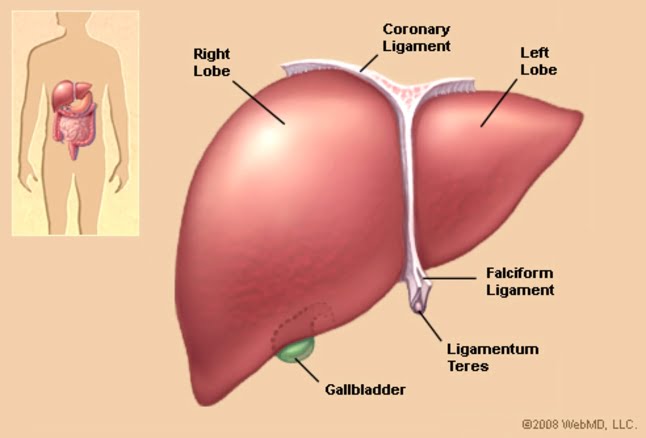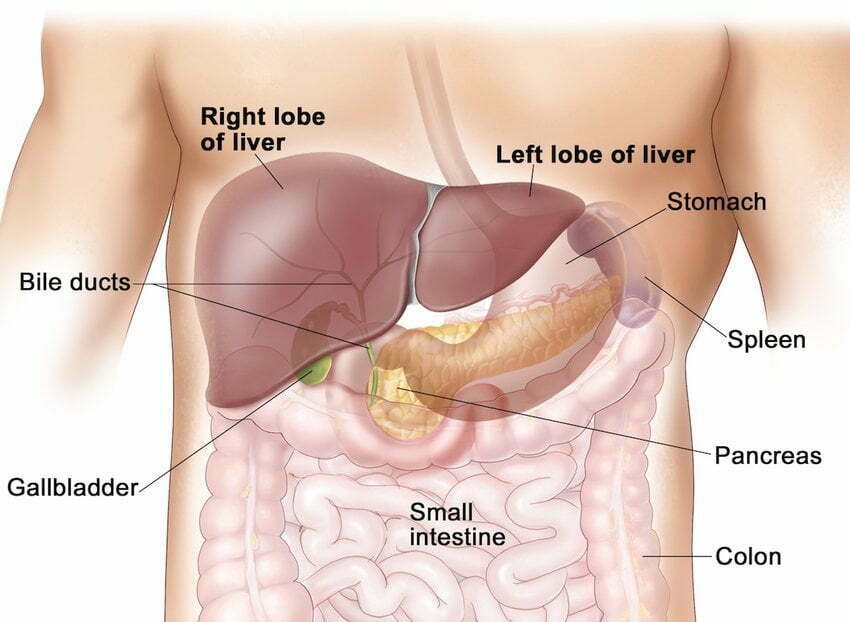
By Kewal Verma
The liver is a reddish-brown organ located just below the diaphragm and abdominal organs like the stomach, kidneys, gallbladder, and intestines. It is both the largest internal organ (skin is overall the largest organ) and the largest gland in the human body. It weighs around 1.3—3.0 kg. It is located on the right side of the abdominal cavity and performs a variety of functions like– detoxification, nutrient metabolism, as well as protects the body from germs and diseases.
It detoxifies various metabolites or small molecules which are the intermediate end product of metabolism, synthesizes proteins and produces bio-chemicals for digestion and growth. It also helps in regulating the glycogen storage, decomposition of red blood cells and production of hormones.
The liver is a versatile organ and a reservoir of energy that can regrow and replace a lost liver tissue within 5–7 days (8–15 days in humans). It is known to have the ability to regenerate from only one quarter of its tissue. The liver is often called body’s trouble shooter because of its multitasking abilities and capability to regenerate itself. This is why people can donate even a part of their liver. The liver feels like rubber but normally cannot be touched because it is ‘locked up’ in the rib cage. Curiously the liver is only found in vertebrates.
The liver collects, breaks down and redistributes the absorbed nutrients i.e. – carbohydrates, fat and protein in the food to different parts of the body and muscles through the bloodstream. The digestive functions in the body typically with the secretion of bile by the liver cells which also filter and expel the potentially harmful substances like tobacco, alcohol and dust particles from the kidney, gastric system and skin (perspiration). It regulates the flow of nutrients in the blood, and antibodies also called immunoglobulin, a protective protein produced by the immune system to fight against blood infections and alien substance, called antigen. The antibodies help to remove the antigens, disease-causing organisms and toxic materials from the body.
Whenever an alien particle enters the body, the immune system identifies it as a foreign intruder and produces antibodies to attack, neutralize and eliminate the aggressor antigens which differ from those found in the body. As a result the antibody-coated antigens immobilize and prevent the microorganisms from penetrating the body. This antibody production goes on for several days until all antigen molecules are removed but the antibodies continue to grow and provide extended immunity against that particular antigen for several months.
Another fact that must be borne in mind is that the liver gets damaged by many external and harmful causes which restrict the ability to perform vital functions. Lack of physical activity is the biggest culprit. It hampers the dispersal of nutrients from the starches; improper diet can lead to fatty liver and eating too much sugar or starches increases the burden of carbohydrates. Overweight is reason for bad liver function due to poor perfusion or passage of fluid through the circulatory or lymphatic system to an organ or tissue. It is derived from the French word “perfuser” which is the rate or volume of blood flow per unit. Poor perfusion or ischemia can lead to health problems like cardiovascular, coronary artery disease, interrupted blood supply in the brain, or reduced blood flow in the limbs like extremities or legs which develop peripheral artery disease (PAD) and don’t receive the required blood flow.
Similarly tobacco and alcohol directly hinder the functioning of the liver because toxins of such substances are difficult to synthesize and evacuate. Excessive intake of alcohol increases the fat content of the liver and hampers the regenerative process. It may be borne in mind that cirrhosis of liver does always happen due to excess alcohol but is sometimes caused even without consuming too much of it. Sustained injuries or viral infections like hepatitis B or C can also lead to fat deposits in the liver cells. Even over-consumption of too much bad fats or starchy foods or diabetes can lead to liver disease.
It is a fact that a liver disease can harm the entire human body and leads to manifestation of disease. This notwithstanding liver is one of the only organ in the body that can regenerate even after surgical removal or chemical injury. Even 51% of the liver mass can redevelop back to full size in just a few days.
The liver is connected to two large blood vessels: the hepatic artery and the portal vein and divided into left, right, caudate, and quadrate lobes. The four lobes are further divided into lobules, and millions of hepatic cells. The liver has two main compartments – the right lobe (larger) and left lobe (smaller) separated by an ensemble of connective tissue. These are further separated into thousands of small segments or lobules containing arteries, veins, sinusoids, bile ducts, and cells.
The liver has three sectors called– hepatocytes, Kupffer cells and epithelial cells. The Kupffer or immune cells are macrophage- a type of white blood cell that kills microbes, remove the pathogens or old red blood cells, and trigger the other immune system cells into action.
The liver is made up of gallbladder stores and bile ducts which releases bile juice inside the small intestine (duodenum). This helps to digest the food, digest fat and eliminate toxic wastes. The bile juices produced by the liver contain a mix of products like bilirubin, cholesterol, bile acids and salts.
Bile ducts are commonly called drainage “pipes” because the carry bile to the gallbladder and then to the small intestine.
Sometimes these bile ducts get blocked leading to a variety of diseases. Gall bladder stones are one of the most common causes of blockage in the bile ducts. If and when the ducts get blocked, the liver can’t get rid of a greenish-yellow chemical called bilirubin which contaminates the bloodstream and enters different parts of the body. This blockage may cause a number of severe infections like Jaundice (yellowing of the skin and in the white part of the eyes), ascending or acute cholangitis due to inflammation of the bile duct. Cholangitis is a life-threatening situation and is often regarded as a medical emergency or cholecystitis which means inflammation of the gallbladder – a small, pear-shaped organ on the right side of the abdomen just below the liver.
The liver is a multipurpose organ whose main role is to aid the digestive, immune, endocrine, and exocrine system and process the blood. It collects blood from the stomach, small intestines, spleen, pancreas, and gallbladder via the hepatic portal vein and then filters and detoxifies it before transferring it back to the heart via the inferior vena cava.

